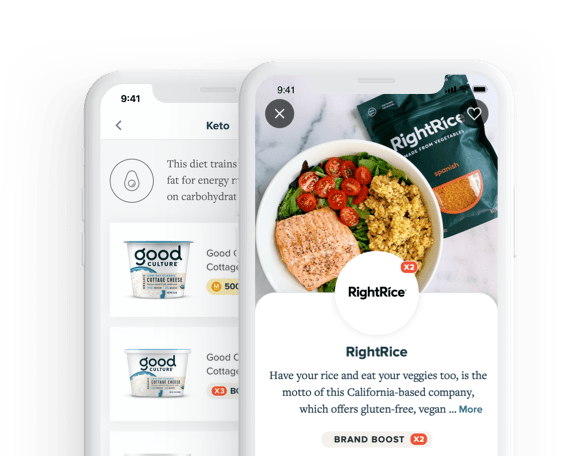Stories
The Truth About Artificial Colors
Joe Dickson
One of the basic tenets of the natural foods movement over the last 40 years has been to avoid artificial ingredients whenever possible, especially artificial colors, flavors, sweeteners and preservatives. I still get asked by brands, retailers and consumers, do these things still matter, or have we moved on? And my answer is always a resounding yes, although for different reasons than you might expect. I’ll discuss artificial colors here, but the same discussion can be had about flavors, sweeteners, preservatives, hydrogenated oils, high fructose corn syrup and so many more categories of unnecessary ingredients.
Why Artificial Ingredients are Largely Banned by Natural Retailers
In the late 1970s, as the natural food industry worked to create an identity in opposition to the increasingly synthetic conventional grocery products of the time, one of easiest ways to differentiate was to ban specific artificial ingredients used widely in conventional products, then and now. Whole Foods Market was a pioneer in this area, creating a list of banned ingredients in the early 1980s as they begin to expand and wanted to promote consistency across stores and build consumer trust. They built those standards on an abundance of precaution – showing a strong preference for natural ingredients, and only allowing highly processed or synthetic ingredients in rare cases where they can be proven safe and necessary. This represented an enormous paradigm shift from the ethos of the conventional food industry and the FDA, roughly “everything is safe unless it’s proven harmful.” Whole Foods and the nascent natural products industry said “synthetic ingredients just shouldn’t be used unless there’s a very good reason and they’re proven safe.” Forty years later, banned ingredient lists still drive the natural products industry, with most retailers in the space using some form of a banned ingredient list.
Artificial Colors Have Problems
Going back to artificial colors as an example, there are plenty of reasons to use precaution. In the EU and UK, products with certain artificial colors and flavors need to carry a warning label, stating “May have an adverse effect on activity and attention in children.” Closer to home, the connection with ADHD and Hyperactivity led California lawmakers in 2018 to authorize the Office of Environmental Health Hazard Assessment (OEHHA) to conduct a full review of the safety of artificial colors. The agency’s final report, released in 2021, found strong connections between synthetic food dyes and hyperactivity and other neurobehavioral problems in children. It also found that current Federal limits on the ingredients “may not sufficiently protect children’s behavioral health. Following the report, lawmakers proposed additional action, and beginning in 2027, foods containing Red Dye No. 3 cannot be sold in the State of California.
And many still feel FDA and food industry mistrust over Red No. 2, which was banned by the FDA in the 1970s long after strong data connected it to cancer risk.
Artificial Colors are Rarely Added in Isolation
Walk down the candy, cookie, beverage, frozen – okay, almost any aisle – of a conventional store, and turn over the labels of some brightly colored options. You’ll notice that artificial colors are rarely added in isolation – you see artificial flavors, sweeteners and preservatives in most of them. You’ll also find that the nutrition facts panels of these products show they’re higher in sodium, added sugar and saturated fat than you’d want to give your kids on a regular basis. And you never see a USDA Organic or Non-GMO Project seal on these products. USDA organic doesn’t allow artificial colors, flavors, sweeteners and preservatives. And most of these ingredients are either GMO-derived or almost exclusively appear alongside other GMO derivatives.
Precaution is Still Warranted in 2024
I took a break while writing this to stroll through the aisles of my local conventional grocery store here in Vermont. (As a grocery nerd, I often do this, and it makes me really hard to shop with…). On one hand, it’s inspiring that I can find Justin’s and Smart Sweets and Yum Earth and Little Secrets and so many natural and organic candy brands that weren’t in these stores a decade ago. And yet, in every aisle, it’s easy to find products using sketchy ingredients, built on a foundation of GMOs and conventional grains, not just still on the shelves, but actively making health claims about their role in your and your kids’ diets. The value of banning questionable ingredients is still very real, and the feeling of relief you experience when you walk into Whole Foods Market, Earth Fare, PCC Community Markets, or any retailer with good standards is still deeply compelling.
With Merryfield we set out to create that feeling of relief and trust wherever you shop, helping shoppers everywhere learn about truly better brands and get rewarded for buying them. All of the brands and products on Merryfield are subject to strict standards that my team developed (banning all the artificials discussed above, and so many more ingredients) and works anywhere you buy groceries.
Apple and the Apple logo are trademarks of Apple Inc., registered in the U.S. and other countries. App Store is a service mark of Apple. Google Play and the Google Play logo are trademarks of Google LLC.
